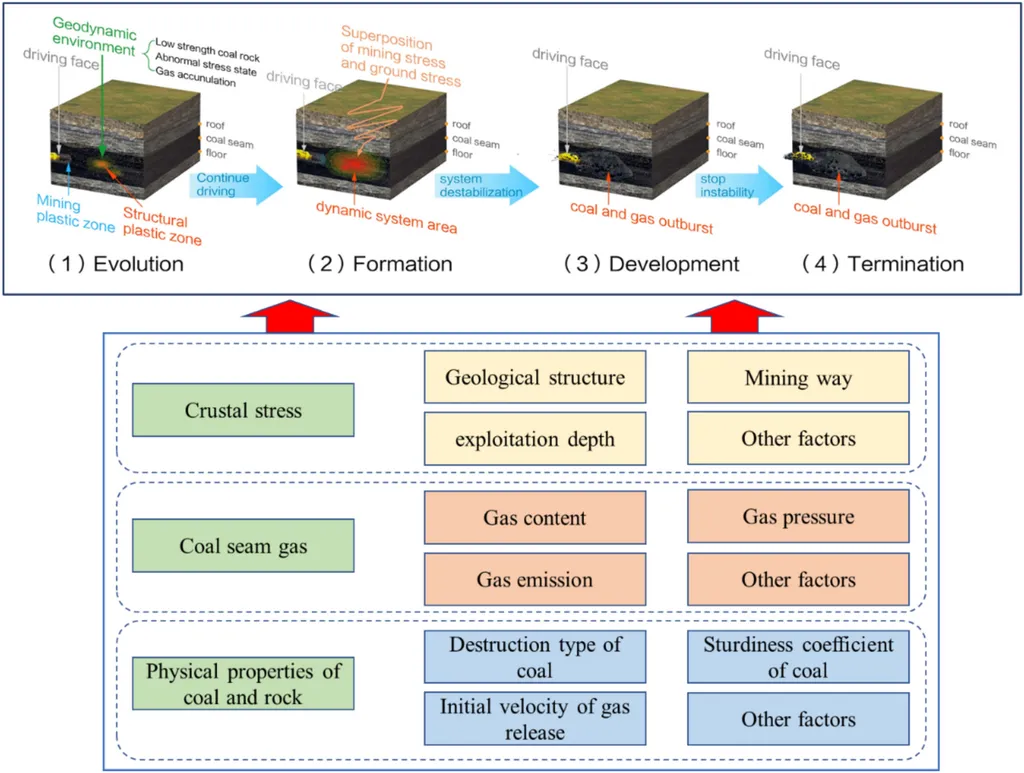In the high-stakes world of coal mining, predicting coal and gas outbursts is a critical challenge that can significantly impact safety and operational efficiency. A groundbreaking study led by WANG Chao from the Faculty of Land Resources Engineering at Kunming University of Science and Technology in China is set to revolutionize this field. Published in the Journal of Mining Science (矿业科学学报), the research introduces an advanced ensemble learning model that promises to enhance the accuracy and reliability of coal and gas outburst predictions.
Coal and gas outbursts are unpredictable and dangerous events that can lead to catastrophic accidents and substantial financial losses. Traditional prediction methods often struggle with the complexity of high-dimensional, small-sample data, which can result in inaccurate forecasts. WANG Chao and his team addressed this issue by constructing a comprehensive database of 60 samples, each comprising seven key indicators such as gas pressure, gas content, and coal failure type.
To improve the predictive modeling, the team employed the permutation importance method for feature dimensionality reduction. This process identified five crucial features: initial velocity of gas emission, coal seam thickness, gas content, gas pressure, and coal sturdiness coefficient. By focusing on these key features, the model mitigates the impact of weakly correlated variables, enhancing its predictive power.
The researchers developed a Stacking ensemble model using support vector machine (SVM), random forest (RF), K-nearest neighbor (KNN), logistic regression (LR), and extreme gradient boosting (XGBoost) as base learners, with XGBoost serving as the meta-learner. To optimize the model’s performance, they applied Bayesian Optimization (BO) for global hyperparameter tuning, resulting in a BO-Stacking ensemble model.
The results were impressive. The BO-Stacking model achieved an accuracy of 92.4%, an F1 score of 0.956, a Kappa coefficient of 0.927, and an AUC value of 0.969, outperforming all individual models. “The BO-Stacking ensemble learning model demonstrates strong predictive performance and stability, providing a novel approach for coal and gas outburst prediction,” said WANG Chao.
The study also utilized the shapely additive explanations (SHAP) method for interpretability analysis, ranking the feature importance as initial velocity of gas emission, gas content, gas pressure, coal sturdiness coefficient, and coal seam thickness.
The implications of this research are profound for the energy sector. Accurate prediction of coal and gas outbursts can lead to safer mining operations, reduced downtime, and significant cost savings. As the energy sector continues to evolve, the adoption of advanced predictive models like the one developed by WANG Chao and his team could become a standard practice, ensuring safer and more efficient coal mining operations worldwide.
“This research not only advances the scientific understanding of coal and gas outbursts but also offers practical solutions that can be immediately implemented in the field,” added WANG Chao. The publication of this study in the Journal of Mining Science (矿业科学学报) underscores its significance and potential impact on the industry.
As the energy sector grapples with the challenges of safety and efficiency, innovative solutions like the BO-Stacking ensemble model provide a beacon of hope. By leveraging cutting-edge technology and advanced analytical techniques, the mining industry can look forward to a future where predictive accuracy and operational safety go hand in hand.

